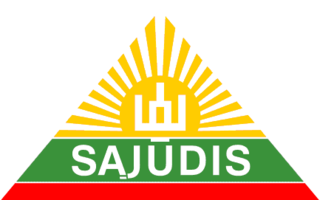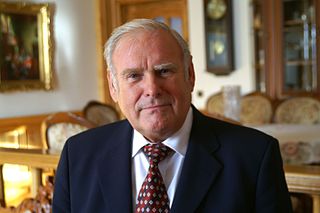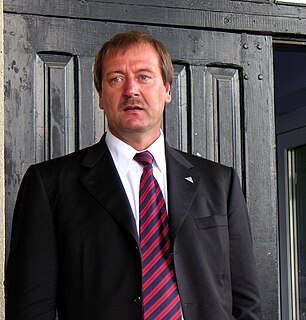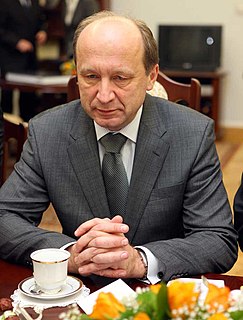| |||||||||||||||||||
All 141 seats to the Seimas 71 seats were needed for a majority | |||||||||||||||||||
|---|---|---|---|---|---|---|---|---|---|---|---|---|---|---|---|---|---|---|---|
| |||||||||||||||||||
| |||||||||||||||||||
 |
|---|
| This article is part of a series on the politics and government of Lithuania |
| Constitution |
Legislature |
Judiciary |
Parliamentary elections were held in Lithuania in two stages on 25 October and 15 November 1992. [1] All 141 members of the Seimas, which replaced Supreme Council, were elected; 70 based on proportional party lists and 71 in single member constituencies. Where no candidate gained more than 50% of the vote on 25 October, a run-off was held on 15 November. The first round of the elections were held simultaneously with a referendum on the adoption of a new constitution.

Lithuania, officially the Republic of Lithuania, is a country in the Baltic region of Europe. Lithuania is considered to be one of the Baltic states. It is situated along the southeastern shore of the Baltic Sea, to the east of Sweden and Denmark. It is bordered by Latvia to the north, Belarus to the east and south, Poland to the south, and Kaliningrad Oblast to the southwest. Lithuania has an estimated population of 2.8 million people as of 2019, and its capital and largest city is Vilnius. Other major cities are Kaunas and Klaipėda. Lithuanians are Baltic people. The official language, Lithuanian, along with Latvian, is one of only two living languages in the Baltic branch of the Indo-European language family.

The Seimas of the Republic of Lithuania, or simply the Seimas, is the unicameral parliament of Lithuania. The Seimas constitutes the legislative branch of government in Lithuania, enacting laws and amendments to the Constitution, passing the budget, confirming the Prime Minister and the Government and controlling their activities.
The Supreme Council – Restoration Seimas of the Republic of Lithuania, was the supreme governing body, elected in 1990. The first meeting was held on 10 March 1990, the last – 11 November 1992.
Contents
The result was a victory for the Democratic Labour Party of Lithuania (LDDP), which won 73 seats. Analysts attributed the surprisingly decisive victory to support from farmers and the Russian and Polish minorities, as well as widespread dissatisfaction with the economic situation and the policies of the ruling Sąjūdis political movement, which only won 30 seats. The new constitution was approved with 56.76% of registered voters in favor. [2]

Democratic Labour Party of Lithuania was a social democratic political party in Lithuania in 1990s. The youth organization of LDDP was called Lithuanian Labourist Youth Union.

Sąjūdis, initially known as the Reform Movement of Lithuania, is the political organisation which led the struggle for Lithuanian independence in the late 1980s and early 1990s. It was established on 3 June 1988, and was led by Vytautas Landsbergis. Its goal was to seek the return of independent status for Lithuania.
In the aftermath, the leader of the LDDP, Algirdas Brazauskas, was elected the Speaker of the Sixth Seimas and assumed the title of acting President of Lithuania. Bronislovas Lubys was appointed Prime Minister.

Algirdas Mykolas Brazauskas was the second President of a newly independent post-Soviet Lithuania from 1993 to 1998 and Prime Minister from 2001 to 2006.

The Sixth Seimas of Lithuania was the first parliament (Seimas) elected in Lithuania after it restored independence on 11 March 1990. Elections took place on 25 October 1992, with the second round on 15 November. In a surprisingly decisive outcome, the elections were won by Democratic Labour Party of Lithuania (LDDP), with 73 seats. The result reflected widespread dissatisfaction with the economic situation and the policies of the ruling Sąjūdis political movement in the preceding Supreme Council of Lithuania.

Bronislovas Lubys was a Lithuanian entrepreneur, former Prime Minister of Lithuania, signatory of the Act of the Re-Establishment of the State of Lithuania, and businessman.












